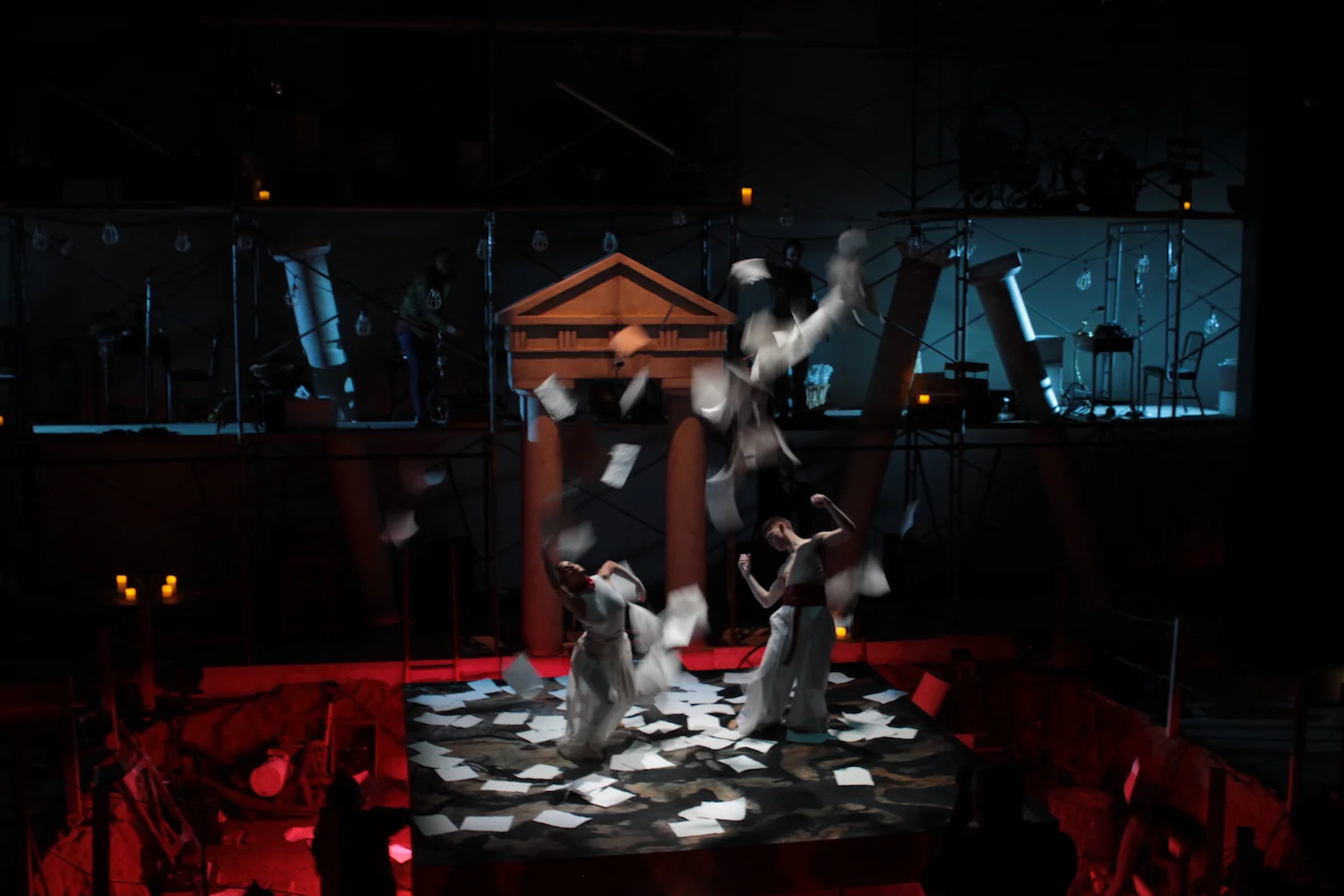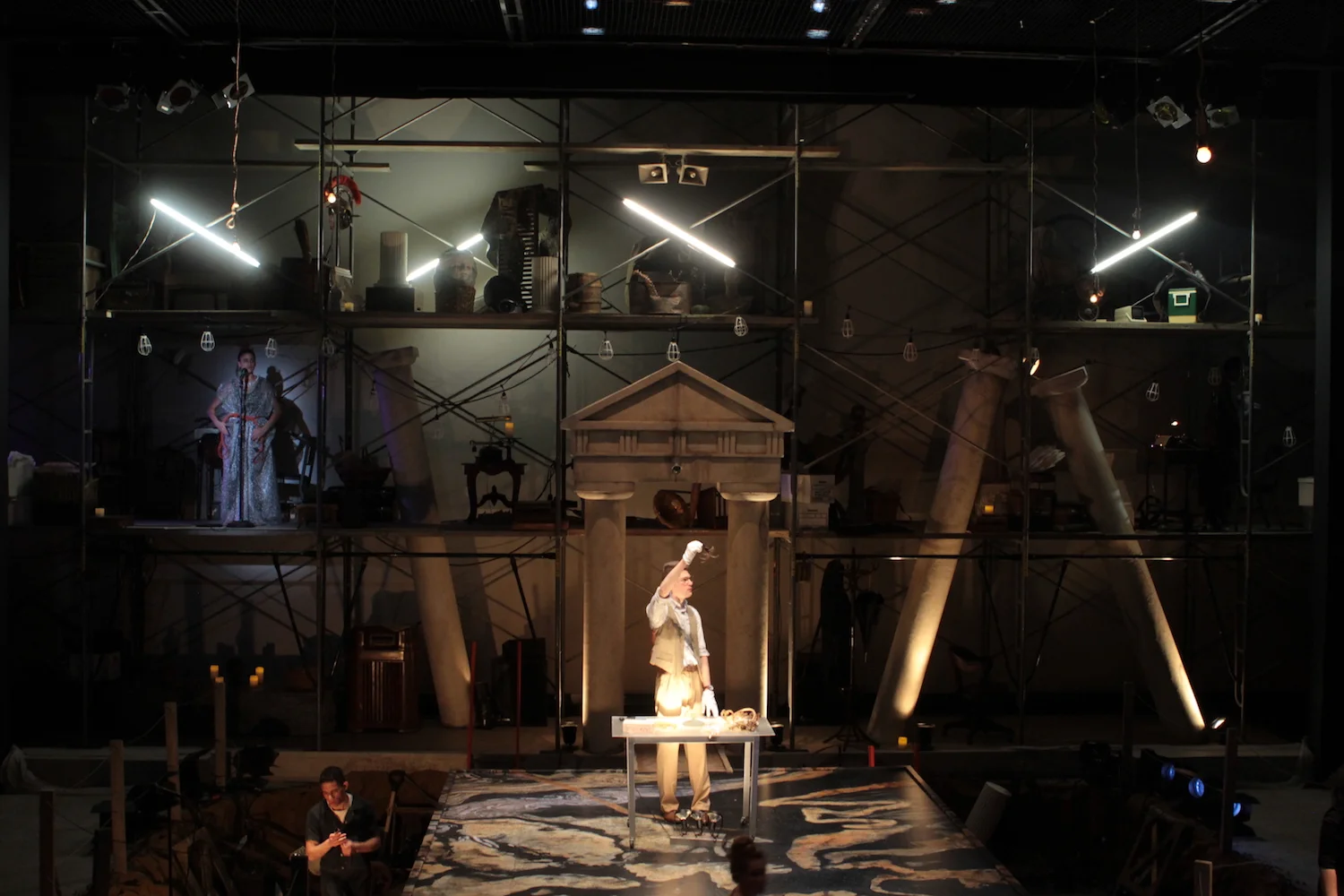Sound Design - Theater
Photo Credit: Jackson Lasseter
at: Emerson Stage - Semel Theater
by: Karen Hartman, Tanya Barfield, Caridad Svich, Lynn Nottage, and Chiori Miyagawa
directed by: David R. Gammons
scenic design: Jackson Lasseter
lighting design: Sydney Skora
costume design: Simone Bordage
The Show
Antigone Project: A Play in Five Parts consists of five different stories, each written by a different playwright and each re-imagining, re-mixing, or inspired by Sophocles’ classical play Antigone. The central, unifying concept for this production was in creating a space that evoked an archeological dig and archival space - where ideas, artifacts, and fragments could be un-earthed, re-considered, re-purposed, and re-contextualized. Story to story, my design varied fluidly between naturalistic soundscapes and music and sonic abstractions - each story calling for it’s own setting.
Here I will focus on just a few sound design moments which give a sense of the world of the show and can be more easily translated to this presentation format.
Excavation and Transitions
In this production, transitional texts were created by the ensemble to be spoken between stories. During these transitional moments, the feeling of the raw space itself came to the forefront. I created a soundscape for these transitions that blends a naturalistic and hyperrealistic sense of excavation. Mixed on the multi-channel surrounding sound system, the sounds were placed with varied sense of depth and direction, enveloping the audience. Here is the opening sequence of the show leading into this excavation soundscape:
Photo Credit: Jackson Lasseter
For each transition, other elements were combined with this soundscape to lead the audience towards the next story. For example, in the transition leading towards the story “Medallion,” set in World War I, snippets of period music (The Original Dixieland Jass Band - “Livery Stable Blues”) are abstracted into the soundscape before leading to a layering of archival speech recordings and a period (Billy Murray - “Over There”) into a new texture before landing in the new location for top of the scene. This layering was inspired by the central idea of echoes from the past being re-contextualized into something new.
Photo Credit: Jackson Lasseter
Photo Credit: Jackson Lasseter
In a later transition which directly bridges two stories without an ‘excavation’ interlude, the voices of the accusatory press and public at the end of “A Stone's Throw” grow more and more overwhelming before blending into a texture created of abstracted and heavily processed copies of those same voices. This texture serves as the lead up to a cataclysmic event that begins the next story, “Red Again.”
Microphones
Photo Credit: Jackson Lasseter
Microphones were used throughout the show. In “Medallion” they were used to create a distant, echoing quality to the voice of a deceased character, lost in the war. In “Red Again” they created a hyper-intimate, personal, telephone-like quality to certain speeches. And in “Antigone Arkhe” they were used to live-process the voice of the character “Digital Antigone.” Below is a demo recording of the processing chain used for this effect on my own voice.




